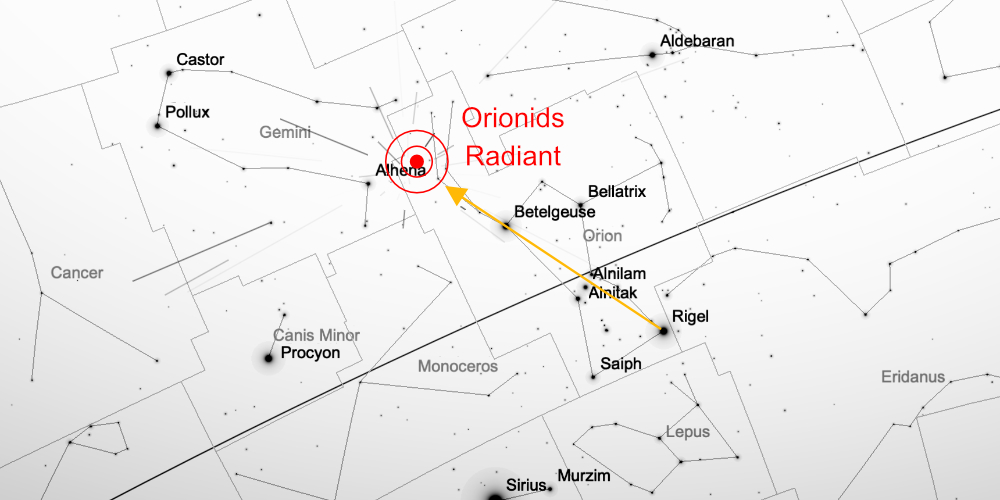 Orionids Meteor Shower Orionids Meteor Shower |
 |
The Sparklers
Despite having only a low to moderate rate (20 per hour), the Orionids meteor shower is known for its great beauty. One reason is that this shower is framed by many of the brightest stars in Earth’s night sky including Sirius, Rigel, Betelgeuse, Aldebaran, Castor, Pollux and Capella.
Another reason is their blazing high speed — 148,000 mph — which means bright meteors that can leave behind glowing trains (smoky trails) and produce fireballs (especially bright meteors that can break up or explode). Only the Perseids and Leonids have more fireballs.
The Orionids are active from October 2 to November 7 and typically peak around October 20-21. See below for this year’s peak. If you are familiar with the constellation Orion, then the radiant will be easy to find.
Which comet left behind the debris that forms this shower? The most famous of all -- Halley's Comet — which will return to the inner solar system in 2061 to release more of the ingredients of meteor showers into the surrounding space.
| Dates |
Rate |
Speed |
Radiant |
Parent |
2024 Peak |
| Oct 2 - Nov 7 |
20 |
41 mi/s |
Orion |
Comet Halley |
Oct 21/22 |
|
| Viewing Orionids Meteor Shower | | Level | Easy | Rating |  | Best Viewing | Night of October 21/22 |  | For 2024, some bad news is that a very bright Waning Gibbous moon will be rising around 8:57 PM and interfere with viewing all but the brightest of meteors until it sets around 1:21 AM on the 22nd. |  | Once the sky is dark enough, look east for the constellation Orion. Look from Rigel below Orion’s belt, to Betelgeuse above the belt, and continue half the distance again to the radiant (see above). In the Starry Hill region, the radiant rises in the eastern sky about 10 PM and rises throughout the night.
|  | In general with meteor showers, the best viewing begins after midnight and improves each hour until just before dawn.
|
|
| More info: All about Shooting Stars, Meteors and Meteor Showers
|



